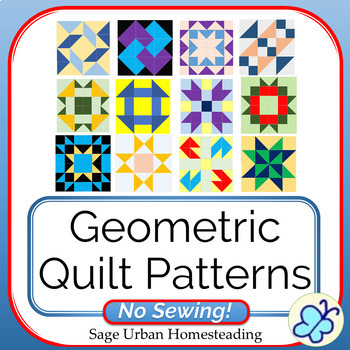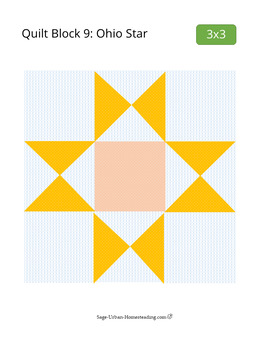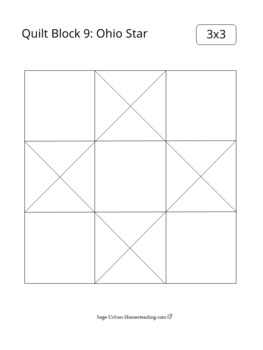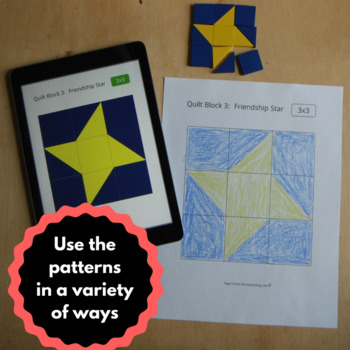Geometric Quilt Patterns
- PDF
Description
We were playing with pattern blocks when I had the idea to try making quilt designs.
Quilts are a great way to study math, history, and art all at the same time.
I had trouble finding a book with square and triangle designs that would be easy for us to replicate. All of the books I found at the library were aimed at sewing. I only needed some good diagrams. So I researched historical quilt patterns and made my own book of diagrams!
It includes 40 different designs in color and the same 40 designs as black and white outlines, plus some plain grids to color your own patterns.
We have found several ways to use these:
* Set up the .pdf book on a tablet and page through as you make designs with your own pattern blocks or print out color copies and cut apart to make your own paper set.
* Print out the black and white outlines to color using the color diagrams as inspiration or create your own designs.
* Buy some 1 inch square colored label stickers and recreate the patterns using stickers. See photos of this idea in action on my website. With advanced students, you can start talking about area and fractions related to how many stickers are used in a design.
However you choose to make the quilt designs, they can be displayed as individual blocks or joined together as a larger project with many people contributing.
It's just like the old days but no sewing required!
Recommended Resources
Weekly Schedule for Homeschooling
All of my products are designed with highly readable fonts for reduced eye strain.
Thank you for spending some time with me! Please remember to leave feedback so you can earn credit towards future purchases on Teachers Pay Teachers. I appreciate hearing how things are going for you and love it when you share ideas for how I can make resources even better.





